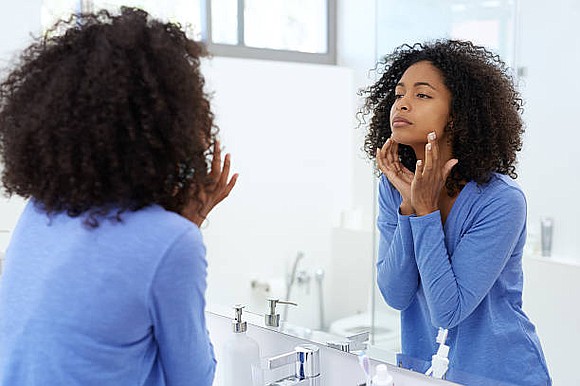Have You Checked Your Skin Lately? It Could Save Your Life?
Style Magazine Newswire | 12/3/2021, 9:43 a.m.
It may sound dramatic, but skin checks save lives. They can also prevent or detect skin cancer early. This is especially important for Blacks who are more prone to certain skin conditions.
While encouraging people to do routine self-exams, the American Academy of Dermatology (AAD) shares some case studies that led to important discoveries.
Richard Danzer, of West Palm Beach, Fla., found a large, painful cyst on his back during a skin self-exam. Dermatologist Dr. Brittany Smirnov examined him, and he was later diagnosed with lung cancer and given lifesaving treatment.
When John Ahearn, of Phoenix, had dark bruising that appeared on his legs, dermatologist Dr. Lindsay Ackerman suspected he might have a serious blood issue. She collaborated with a hematology-oncology specialist who diagnosed Ahearn with leukemia. He is now in remission after a bone marrow transplant.
The importance of skin self-exams
After noticing changes to a mole on her toe, Yvonne Basil, of Plano, Texas, saw her dermatologist and was diagnosed with melanoma from an in-office biopsy. She is now cancer-free.
“Regular self-skin checks are crucial to identify skin cancer and other skin diseases early,” AAD president Dr. Ken Tomecki said in an academy news release. “We encourage everyone to regularly perform skin self-exams to catch any changes early.”
What to look for during skin self-exams
You can do your own skin checks at home, and then follow up with a dermatologist if you spot something concerning. The academy suggests using the initials A, B, C, D, E during your self-exam.
A is for Asymmetry, when one half of a spot is unlike the other. B is for border, when a spot has an irregular, scalloped or poorly defined border, C is for color, when the spots have color variation from one area to the next. D is for diameter. Melanomas are typically larger than 6 millimeters, which is about the size of a pencil eraser. E is for evolving. The best time to do a skin self-exam is after a bath or shower. To do a skin exam, look at your body in a full-length mirror. Make sure your room is well-lit. You can also enlist the help of a spouse, partner, or close friend or family member to help you with these exams, especially for those hard-to-see areas like your back or scalp. Look at your underarms, forearms and palms. Look at your legs, between toes and at the soles of your feet. Use a hand mirror to examine your neck and scalp, as well as to check your back and buttocks.
If you are examining yourself for the first time, spend time carefully going over the entire surface. Learn the pattern of moles, blemishes, freckles, and other marks on your skin so that you’ll notice any changes next time. If you look at your skin on a regular basis, you’ll know what’s normal and what’s not.





